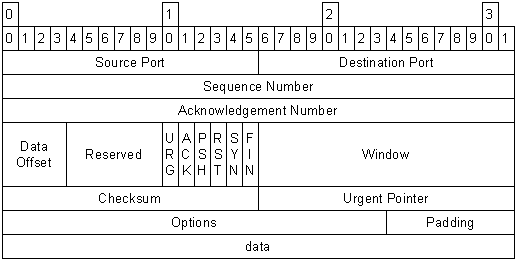Exploring window size, mss and mtu
So it has been some time since I started reading about TCP/IP and networks in detail, and there is one thing which slightly confused me initially - window size, transmission unit and segment size. When given a first read, they tend to seem nearly same, well not same but one might be tempted to think “Why was there even a need to define these separately?”.
So let’s go through each of them, and then try to figure out where the difference lies.
TCP windows
When we think about TCP, there are two entities on which transport depends - the capacity of the network and the capacity of the endpoints (the client and the server). Congestion window marks the limit of data which can be held by the network, a process known as congestion control and the receive window tries not to exceed the capacity of the receiver to process data, a process known as flow control.
MSS (Maximum TCP segment size)
Before going on to mss, let’s first understand what a TCP segment is. A segment is data (obtained from a data stream) along with a TCP header. A typical TCP header looks something like this-

Now, mss denotes the maximum amount of data that a communication device is willing to handle in a single (reconstructed) TCP segment (header excluded). Having said that, one is right to derive a conclusion that the congestion window size is effectively a multiple of mss. Also, mss has no bearing on the receive window. MSS is normally decided during the three-way handshake.
MTU (Maximum transmission unit)
MTU is the largest size packet or frame, specified in octets, that can be sent in a packet or frame based network (such as the Internet).
The confusing part is, on reading the above, one might wonder where actually do frames, packets and segments differ? This diagram pretty much summarises the differences.

It suggests that all of them are units of data, but are associated with different layers. What this essentially means is that on progressing down the layers, each unit of data is wrapped up with some additional information.
- Application layer: For the first part, raw data enters through the application (say you send a message to someone via a messaging client using the socket API).
-
Transport layer: For the next part, TCP/UDP headers are associated with the data (yes, the same ones we saw previously)
 Segment.
Segment. -
Internet layer: Next IP headers are associated. IP headers contain information about IP version, source IP, destination IP, time-to-live (ttl) , etc
 Packet/Datagram.
Packet/Datagram. -
Link layer: Finally, frame headers (source and destination MAC addresses) and footers (frame check sequence, FCS which is an extra error-detecting code) are associated (more on the specifics in future)
 Frame.
Frame.
Interestingly, the above diagram itself is enough for clearly denoting the difference between mss and mtu (based on the layers with which they are associated with).
Some specifics
- The default TCP mss is 536 bytes. It’s value can be optionally set as a TCP option, but cannot be changed once the connection is established.
- The Internet de facto standard mtu is 576 bytes, but ISPs often suggest using 1500 bytes.
- Maximum window size is 65,535 bytes.
What happens when packet sizes exceed the specified limit ?
Packets which are bigger than the MTU are fragmented at the point where lower MTU is found and is then reassembled further down the chain. However, packets exceeding MSS are NOT fragmented, they are simply discarded.
Thanks for reading. Hope it helps.
Leave a Comment